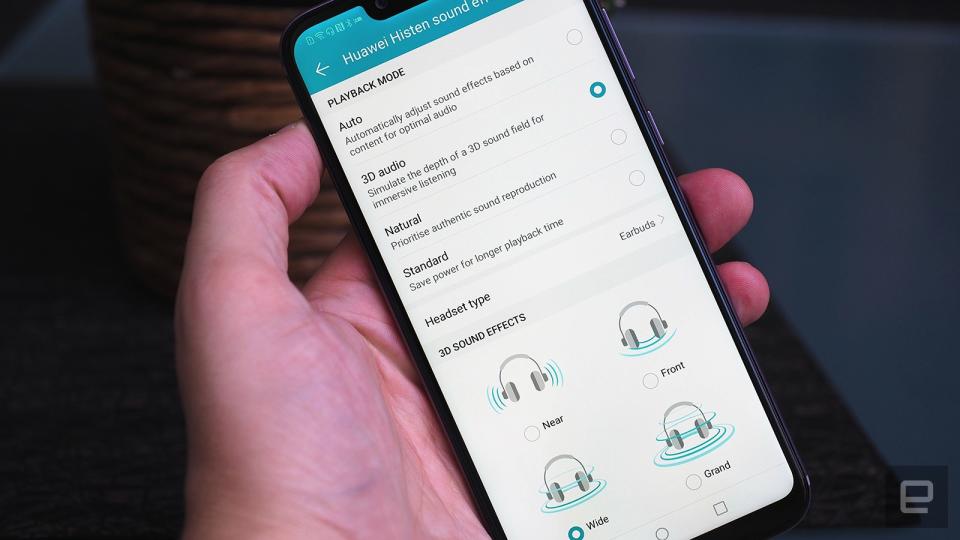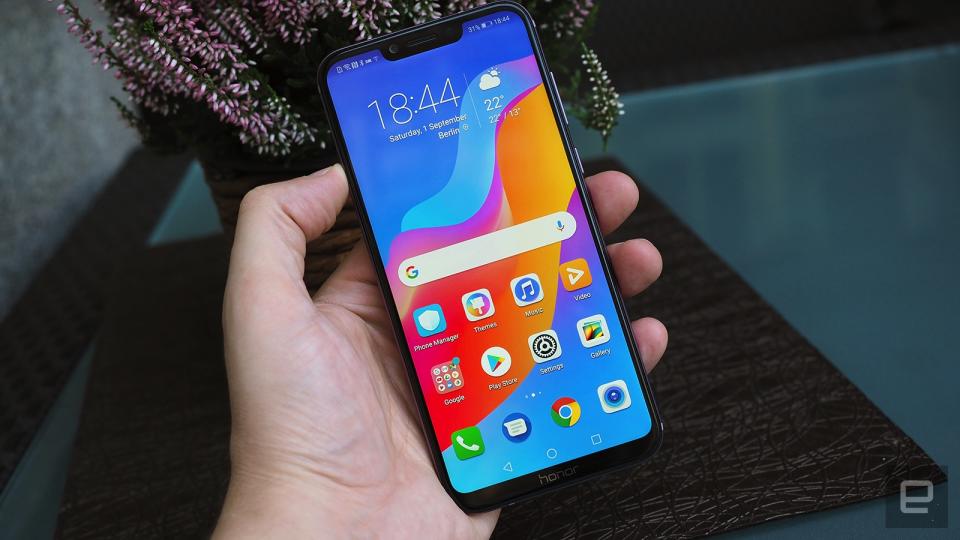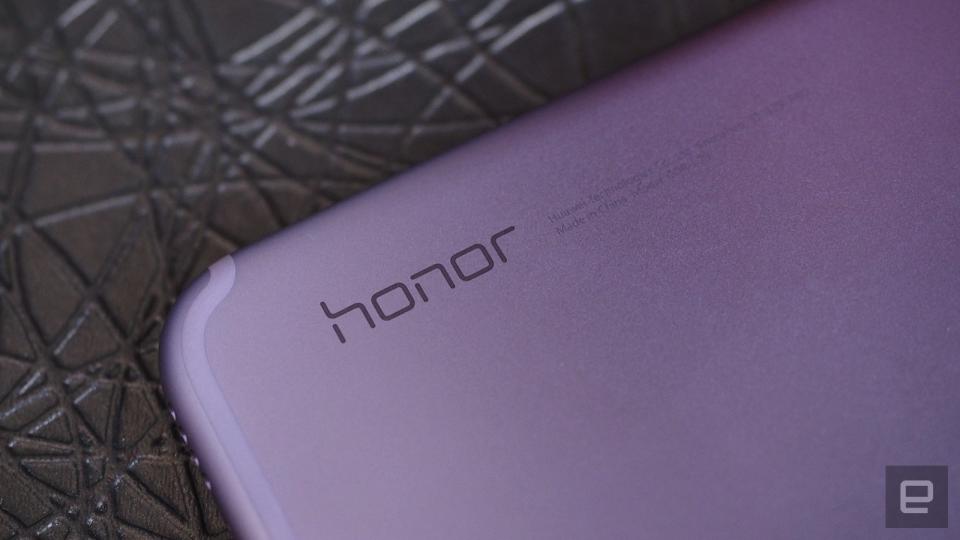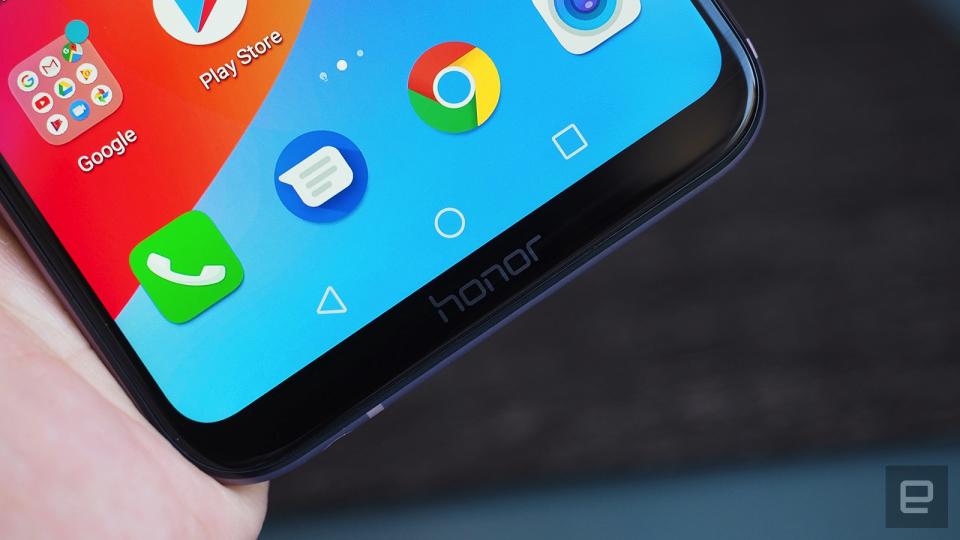Honor’s Play gaming phone is far from perfect for 'PUBG'
But it's still not a bad phone for the price.
The new Honor Play is business as usual for Huawei's under-brand. A marriage of surprisingly good specs, premium-esque design and a mid-range price tag is Honor's modus operandi, but the Play was created with a specific demographic in mind: The avid mobile gamer. While most phones are more than capable of running games, the Play has a couple of special features that are supposed to give you, the player, an advantage over the competition. The first of these is called GPU Turbo, but you won't find this mentioned in any settings menu or performance-tweaking app. It's something that runs behind the scenes, but it isn't unique to the Play. The Honor 10 also has GPU Turbo built in, and a software update is going to add this hidden feature to some of the brand's other devices in the very near future. It's said to improve performance of the Honor Play's Kirin 970 processor by up to 60 percent and reduce power consumption by up to 30 percent. But Honor's arrived at these figures by comparing performance against the previous-gen Kirin 960, not the same Kirin 970 before the update, so they are pretty confusing statistics. What it's supposed to do for resource-intensive games, though, is to improve frame rate and keep it consistent. The second feature designed to give you an edge is Huawei's Histen audio tech. This is something you do turn on in the settings, but as far as I can tell it only works with wired headphones. Strangely, there aren't any included in the box, but the combination of USB-C port and standard 3.5mm headphone jack means you're bound to have something lying around to plug in. There are various audio modes to switch between and it also asks you to specify what type (earbuds, over-ears, etc.) or even what specific Huawei model of earphones you're using, to personalize the profile accordingly. The 3D surround sound setting is the important one here. In games where it's key to hear exactly what's going on around you like PUBG Mobile, this audio mode is supposed to improve your spatial awareness. So compared with regular stereo, the idea is you can pinpoint the direction of footsteps and gunfire a bit better, as well as the distance between you and a passing vehicle, etc. The third special feature is specific to PUBG Mobile, though Honor says other games will be supported in the future. It's called "4D Smart Shock," and it makes the phone vibrate much in the same way a console gamepad does. It's situationally aware, too, so the vibration patterns are different depending on the gun you're firing, whether you have a silencer equipped, and how close you are to a grenade when it blows up and ends your game. There are a couple of more general points about the phone that make it at least slightly better suited to games than other devices. The octa-core Kirin 970 chip was the best chip Huawei had to offer until all of five minutes ago. That said, it powers flagship phones like the P20 Pro, and there are no bottlenecks elsewhere with 4GB of RAM and 64 gigs of expandable storage to tap. You also get a big 6.3-inch, full HD+ screen (2,340 x 1,080) to stare at, and the bigger the screen, the bigger the target. My first impression was this might be a double-edged sword -- the size and 176g weight (around 6.2 ounces) being a bit too unwieldy for serious play sessions -- but I quickly became comfortable with the dimension. A 3,750mAh battery means you don't need to worry about running out of juice too quickly, though the game you're playing, screen brightness, data requirements and the rest will of course affect rundown rates. It's no accident I've referenced PUBG Mobile a few times already. The title is actually an official Honor Play partner, hence the 4D vibration feature being unique to this one game (for the time being). I've played a lot of PUBG and consider myself basically an expert at the rapidly paced arcade modes specifically, so naturally I'm a good test case. For reference, I've played on a number of Android phones, as PUBG has become my go-to benchmark for gaming performance. On a day-to-day basis, however, I tend to play on a 4.7-inch iPhone 8, which isn't a device that was crafted with gaming as the main consideration. You can't physically see Honor's GPU Turbo hardware and software optimization trickery at work, but obviously I immediately cranked the PUBG graphics settings up to as high and demanding as they could get. (I also tightened up the controls so my thumbs didn't have to roam very far, increased the look sensitivity, and turned off aim assistance.) Honor says the average frame rate hovers around 40 fps, and I'm willing to believe that. It's normal to experience stutter as you jump out of the plane at the beginning of the match and rush towards the ground as it's still being rendered. Once you hit the dirt, though, the experience is super smooth and PUBG looks great on the big 6.3-inch display. As Honor promises, the frame rate remains high and stable, as long as there's no connection lag. I've noticed a few graphical glitches in the form of an occasionally strobing background tile, way off in the distance. The gremlins don't have any impact on the foreground, though, so playability's unaffected. I couldn't tell you whether fault lies with the phone, the game or the often unreliable hotel and IFA WiFi networks. From a visual point of view, then, the Honor Play lives up to the hype of being a good gaming phone. Honor's battery life claims around GPU Turbo, I'm not so convinced on. Playing for about 45 minutes on a high brightness setting (and just generally thumbing around the phone for another 20 to 30) eats up roughly 50 percent of the charge. That's not extraordinary in my experience. There's no night-and-day difference when you enable the 3D surround sound feature, but I think that's partly because the PUBG developers have done a good job with the standard stereo audio cues already. With 3D turned on, everything sounds a lot more distant, but this comes with a certain clarity that marginally improves your directional awareness. It won't massively up your game, especially if you're already sensitive and attentive to your immediate surroundings, but I would say it creates a more realistic atmosphere. The roomier sound profile gives you a better idea of distance, more than direction. It does lower the base volume, however, so perhaps not a setting you want on all the time if you're contending with background noise and/or leaky headphones. The 4D Smart Shock feature specific to PUBG is more impressive than it sounds. There is a vast difference between the vibration patterns you feel when you pull the trigger on a shotgun, for example, compared with the auto fire of an assault rifle. The vibrations themselves are quite subtle, too. The phone doesn't jump around in your hand and the screen doesn't shake, so it's not a distraction. The vibrations won't help you get any better at the game, but they definitely add another layer of immersion you probably take for granted when you're playing something on a big screen with a console controller. This is the only feature I feel makes playing PUBG on the Honor Play genuinely different from any other phone with equivalent specs. It adds a little more fun factor. I'm not sure you'd want to have 4D Smart Shock turned on if you intend to play for hours, though. After a while, it can make your fingers a tad tingly and numb -- a bit like Sony's Dynamic Vibration feature -- especially when you pull the trigger as often as you have to in the fact-paced arcade modes I prefer. It's probably fine if you tend to stick to the longer, classic games. I actually had to Google how to turn it on, because it's hidden in the settings for Honor's Game Suite app rather than being anywhere more obvious. While I won't argue that some Honor Play features might be attractive to avid mobile gamers, especially PUBG addicts, the phone definitely wasn't built from the ground up with this demographic in mind. It's more branding than anything, because there are actually a bunch of features that are at odds with the whole gaming theme. To start, audio lag I experienced with Bluetooth headphones made PUBG borderline unplayable, but that could be an issue specific to the headphones themselves. What's more, the phone gets uncomfortably warm very quickly, and that's particularly apparent when playing something as demanding as PUBG. Sweaty hands and long gaming sessions don't mix well. The curved corners of the display are also a very strange design decision. Anyone familiar with PUBG will know the map sits in the top right corner of the screen, but you don't get a full 90-degree corner. Instead, the curvature of the display cuts it off, obscuring part of the minimap. I guess it's not that big of a deal, but PUBG was developed for rectangular screens. Don't cut the corners off and tell me it plays better that way. The pièce de résistance of silly design decisions is the placement of the headphone jack, though. You're not going to do very well at PUBG if you're playing without headphones. That's just a fact. Putting the 3.5mm jack all the way over to the left-hand side of the bottom edge might not sound like a grand oversight, but it means you can only hold the phone in landscape one way. The problem with that is, it puts your right ring and little finger (which function as natural supports) right over the power button. It's very easy to hit accidentally, and that's kinda... unforgivable. Imagine playing PUBG on a PC with a monitor that could turn off at any random time. Then imagine that monitor is marketed as the best one to play PUBG on. Ridiculous, right? The Honor Play, then, isn't the perfect gaming phone, and it's certainly not designed with PUBG Mobile in mind.The whole idea of a 'gaming phone' is more promotional speak than anything, but that'll change later this year when ASUS enters the fray. Its ROG Phone is genuinely pretty nuts, with special cooling tech, ultrasonic bezel triggers that mimic the layout of a console gamepad, and multiple USB ports so headphones and chargers will never be an inconvenience. There will be a bunch of compatible accessories released alongside it that'll let you turn it into something more a handheld console and even a faux PC, too. Now that sounds like proper gaming phone, but it'll no doubt be several times the price of the €329/£279 (around $380) Honor Play. At least Honor's got affordability going for it, but if the company really wants to please gamers with a phone made just for them, perhaps it should take a leaf out of the that industry's playbook and do a beta test first. Follow all the latest news from IFA 2018 here!























